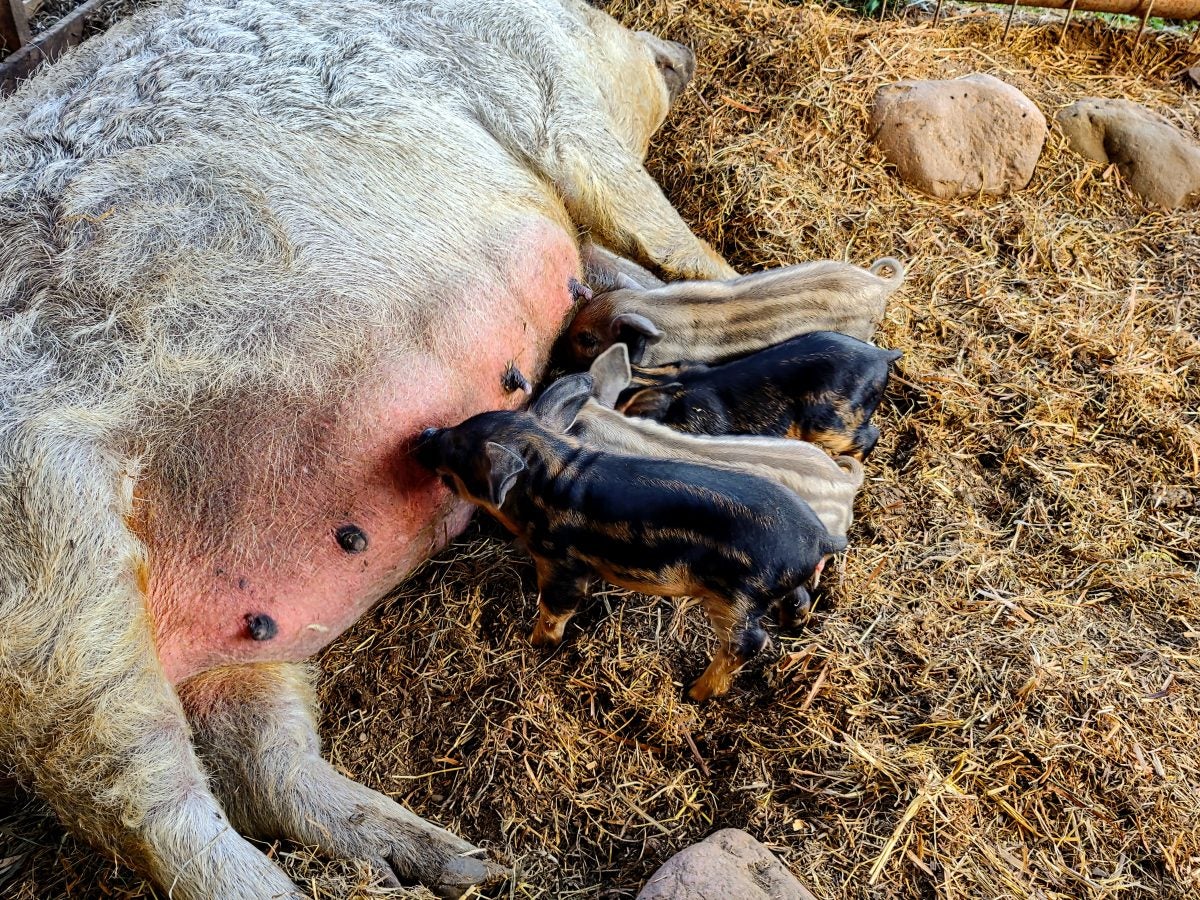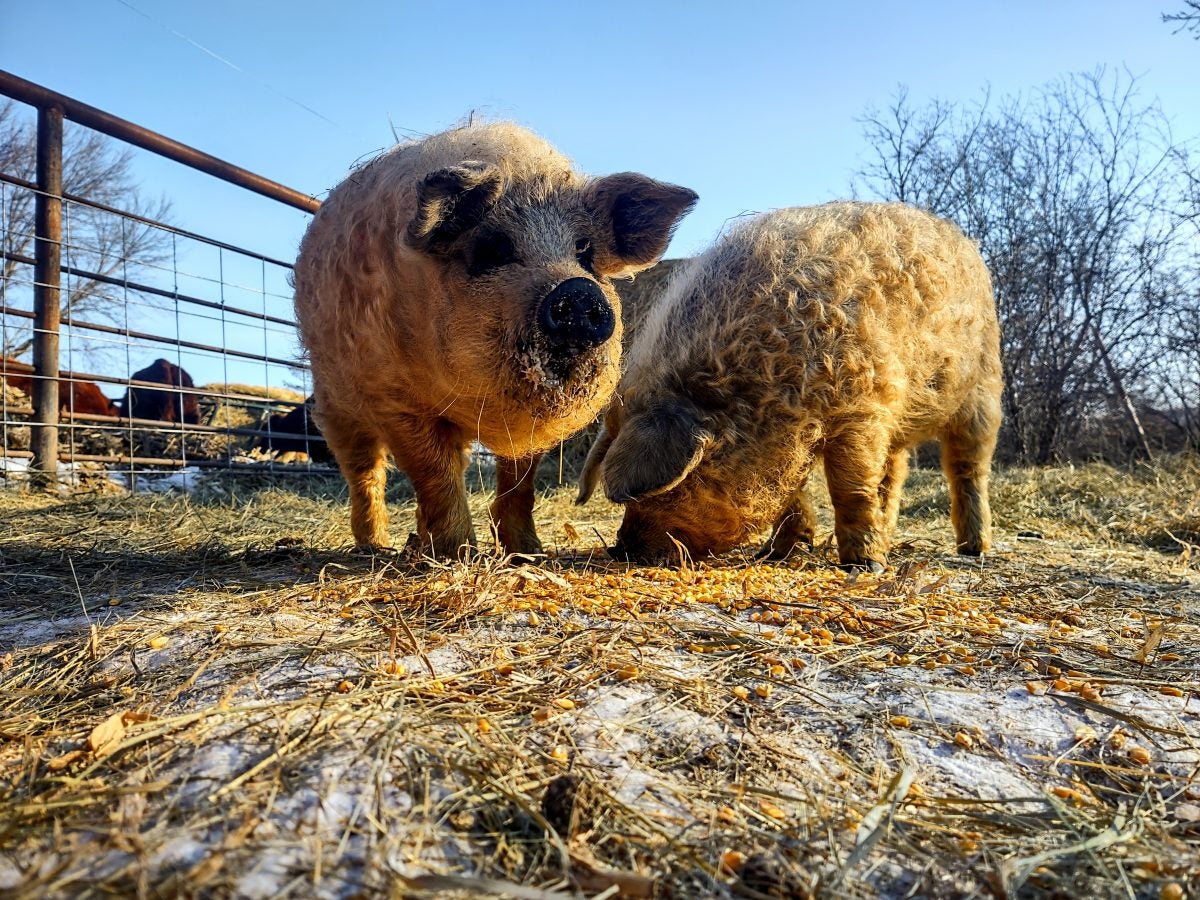Home on the Range #033: Mangalitsa Pigs – Trash Disposal Bacon Factory
Adam Scepaniak 02.04.23

The idea of becoming self-sufficient and procuring your own food used to be an idea reserved to conspiracy theorists donning tinfoil hats, but in recent years it is all the rage. Throughout COVID we have seen grocery store shelves fluctuate from being amply stocked to sparse to even completely bare. Moreover, the cost of basic food items like eggs and bacon are skyrocketing. So, what is one to do? Some people have jumped on the bandwagon of having egg-laying chickens which is awesome, having honeybees, and/or growing expansive gardens. All of these things are fantastic for leading a self-sufficient life on the range. A larger and relatively low maintenance food source you could look at are pigs; more specifically, Mangalitsa pigs.
“Home on the Range” Series on AllOutdoor
- Home On The Range #032: Winter Game Management w/ Moultrie Mobile
- Home On The Range #031: Trail Camera Talk – Photo Upload Frequency
- Home On The Range #030: Moultrie Mobile Delta Base Cellular Camera
- Home On The Range #29: Moultrie Mobile – Game Surveillance & Security
- Home On The Range #028: The Grass Hay is Always Greener
Welcome to our reoccurring series of “Home on the Range.” Here, we would like to share all of our experiences for those who may be homesteading, living off the land, hunting, farming, ranching, and truly investing in nature and the great outdoors. The ability to provide for yourself and your family can be tremendously rewarding and simultaneously difficult at times. So, in “Home on the Range” we want to share our different exploits so you can learn and hopefully we can receive your feedback along the way as well.
Mangalitsa Pigs – Mother Nature’s Natural Garbage Disposal
You might not have heard of the breed of Mangalitsa, but you potentially have seen them before. Mangalitsa pigs are sneakily popular among livestock farmers – hobbyists especially – because of their hearty nature and what you could call an “expansive palate” for food. While you can absolutely feed Mangalitsa pigs traditional grains like corn and oats, it is not mandatory. They will eat grass clippings, leafy brush remnants, and discarded fruit and vegetable rinds. They are Mother Nature’s adorable garbage disposals.
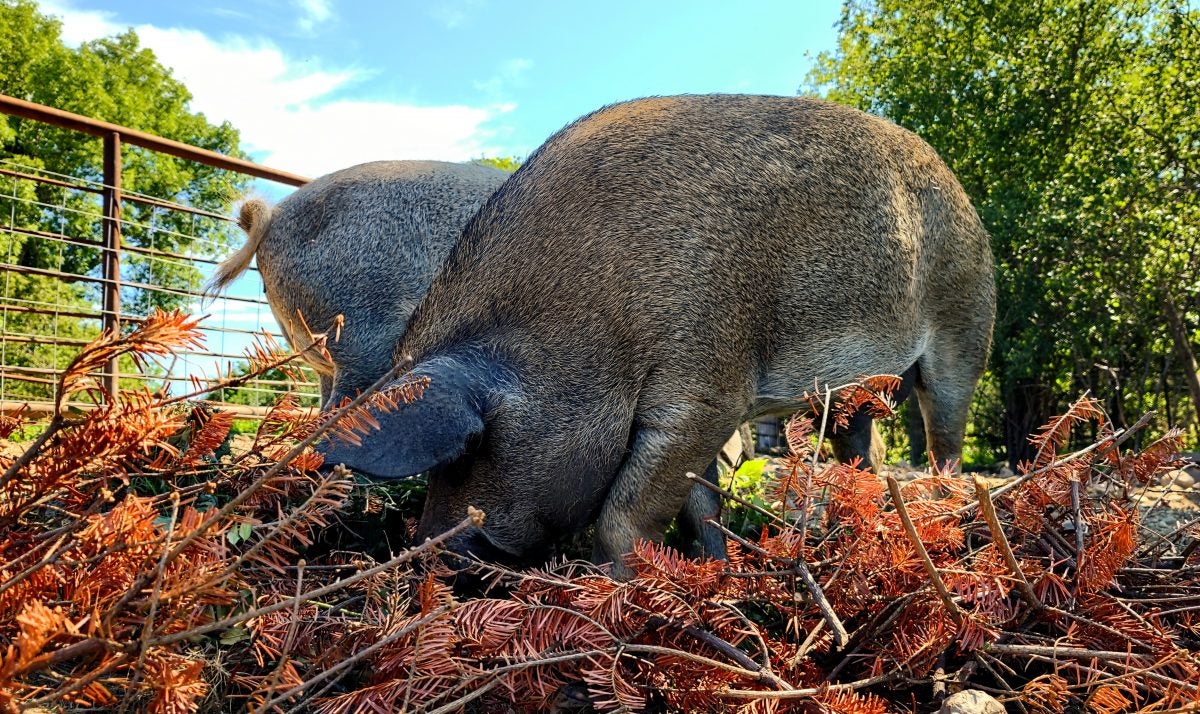
Similar to how groceries continue to rise in price so does the cost of feed for livestock. From top to bottom – the entire process involved in producing food for America’s tables – the cost of things is rising at an uncomfortable rate. So, that is why it is great to find breeds of animals that cost less to raise. Mangalitsa pigs have the stomach to eat discarded food, trimmings from preparing vegetables/fruits, the leafy foliage leftover from a garden at summer’s end, and a lot more.
- Pumpkin, Potatoes, Gourds, Squash
- Barley, Peas, Alfalfa, Kelp, Grass
- Oats, Corn, Sunflower Seeds
- Bread, Muffins, Bagels, Biscuits, Other Baked Goods
- Kitchen Scraps from Fruits, Vegetables, Baked Goods
Mangalitsa pigs can also be raised on a pasture eating grass, foraging, and seeking out natural foods themselves, but not all of us have the room for this. That is why it is helpful to to come upon a breed like Mangalitsa pigs where your scraps can be their dinner. You have less waste from your household; and additionally, you spend less raising a breed of pig that can feed your family some day down the line.
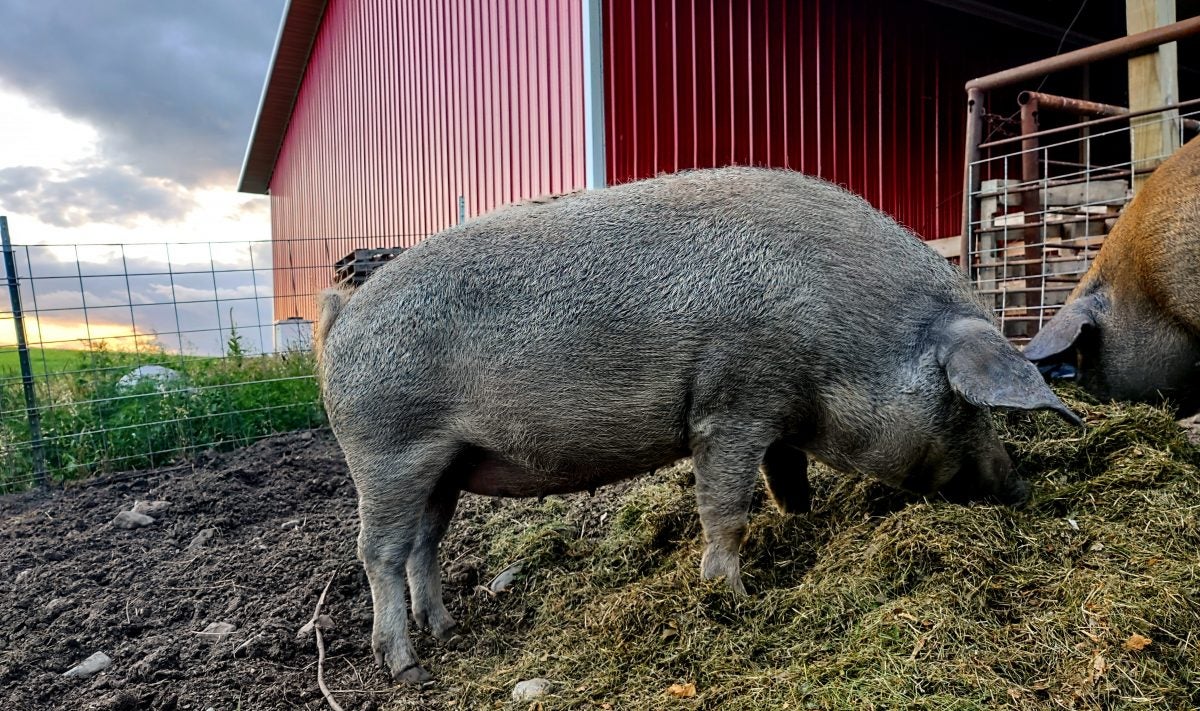
Mangalitsa Pigs – Delicious & Nutritious
Aside from the fact that Mangalitsa pigs are hearty for northern environments and they are an easy livestock animal to feed, they also are incredibly delicious. There are many breeds of pigs that are hearty and not too discerning in what they’ll eat, but what truly makes them the kobe beef of the pork world (as some affectionately refer to them as) is how well their meat is marbled and tastes. Modern, commercial pigs have been bred in the last 50 – 100 years to have low fat content – “pigs are the other white meat.” As a result, the commercialization of pigs have made them tasteless. Contrary to popular opinion, fat makes meat taste delicious. Think of a well-marbled steak or ham with delectable ribbons of fat going through it. Mangalitsa pigs still have retained that delicious, natural marbling within their breed so they are prized for their taste.
In fact, a “fun fact” is where their name and the breed originally comes from. Mangalitsa pigs were originally bred in the 1800s by crossbreeding Austrian wild boars with Hungarian and Serbian breeds. This resulted in a very hairy (sometimes referred to as “sheepish” with their curly winter hair), and a fatty breed of pig. In the Hungarian language, the word Mangalitsa loosely translates to mean “pig with a lot of lard.”
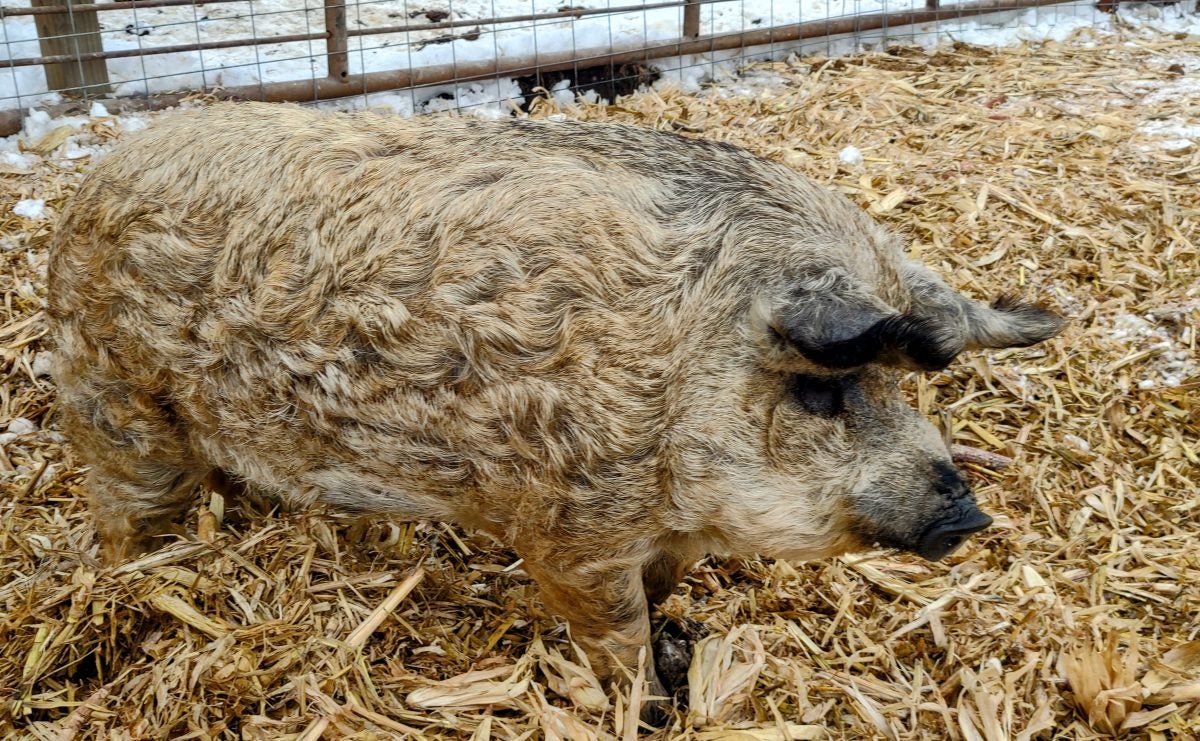
There a lot more attributes to love about Mangalitsa pigs that we have not gotten into here today. Like, if you sell Mangalitsa pig meat you can command high prices (more profitable for yourself), they are friendly animals, love to be pet, are fierce fighters when threatened (coyotes, fox, etc are a none issue – a Mangalitsa pig would mess up a coyote royally), and while more room is always better, they can live a healthy life on a parcel of land.
- Profitable, Prized Meat – Command high sale prices
- Friendly – Love to be Pet and Hand-Fed Vegetables through a Fence
- Fierce Fighters – Will violently defend their young (if threatened) and defend each other (if a predator appears)
- Large Area not Required – A small area is all they need, but you should always give them more space if you have it available to you. Even animals you intend to eat deserve your respect and love. It’s part of being a good steward of animals.
While not all of us have acreage or the space to be raising livestock, if you have some room to potentially raise some animals for food for your family – or additional income – the Mangalitsa pig breed is one that you should consider. They’re delicious, easy to feed, hearty, and incredibly friendly if you respect and treat them well. As always, let us know all of your thoughts in the Comments below, and whether you currently are raising any pigs. We always appreciate your feedback.
